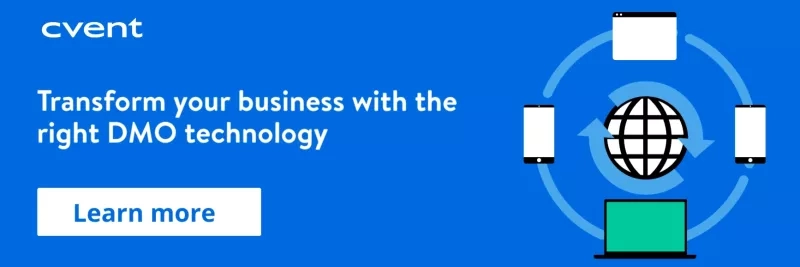Business travel isn’t quite back to pre-pandemic levels the way it’s complement, leisure travel, is. But there is a growing realization among senior level executives that the strategic use of employee rewards can increase profitability. And with much talk the past few years about increasing travel by outlets like Forbes, it’s no surprise that incentive travel is on the rise in the corporate sector. But does your organization really need one? Keep reading to learn the basics of incentive travel with tips and tricks from professional incentive travel planners you won’t find anywhere else.
What is incentive travel?
Incentive travel is any trip paid for by a company as a reward for employees with stellar performance. It’s often used to motivate and reward employees or partners.
Getaways typically last three or more days. Activities include everything from team-building exercises to networking opportunities to and free time to explore the destination.
And while they can be given to any department, incentive travel is most commonly used to motivate sales teams. As for who pays the bill, the company typically funds the majority of the expenses. Some incentive trips are offered separately or in combination with other perks.
Cvent interviewed Susan Shure of Susan Shure Travel who gave us some more thoughts on incentive travel.
“Incentive travel is also known in a lot of companies as employee reward programs,” she told us. “Companies can reward employees for years of service, employee of the month or year, and more. These rewards can include trips abroad [to places like] Europe, Caribbean all inclusive, [and] Hawaii, cruises and more.” They may include corporate meetings or some work-related events in addition to the vacation-like itinerary.
Incentive travel has been around since the 1970s, but it is often misunderstood due to the wide variety of forms it can take. But as non-monetary rewards, such as increased paid PTO, are becoming more prevalent in the corporate world, it’s no surprise that there’s a newfound interest in creating programs like these.
The incentive travel industry as a whole is rebounding from its recession years ago, largely due to the backlash it received from the media and politicians, and from the COVID-19 pandemic. According to the 2019 Incentive Research Fund index, 84% of U.S. businesses used non-cash incentives to retain and motivate their employees, with incentive travel being a popular option before the pandemic. Now with the looming economic recession, non-cash incentives can be a great way to retain employees.
And it’s clear why.
Incentive programs offer a lot of benefits
Like other perks, incentive travel is used to boost employee engagement and productivity. It works by encouraging employees to improve their performance and reach goals. This is especially motivating for younger and mid-career employees.
As of 2020, Millennials make up half of the world’s workforce. And if there’s one thing Millennials love, it’s travel. They’ve reportedly made travel more of a priority than any generation before them. So it’s easy to see why incentive programs are a great fit for most organizations.
Not only that but a travel program helps organizations create a culture of collaboration and commitment to a shared mission. Unifying teams through experiences rather than monetary incentives alone promotes better relationships with the company and positive associations with the business they work for.
This level of customization is one of the most attractive benefits of incentive travel. Not only do businesses have control over what activities they offer but they can also stay within budget and book for their specific party size.
Ni Wayan, Editor and Contributor at Balipedia, adds that the benefits for employers don’t stop there. “I believe that incentive travel is one of the most famous non-cash prizes that’s used by companies to motivate sales staff, partners, and even consumers to greatly improve sales, keep their best reps from going, and motivate the remaining sales staff to pick it up,” says Wayan.
Incentive travel is also a great way to tie in your company’s values. Christopher Hill of Hands Up Incentives told Cvent via email that his company “specializes in sustainable incentive trips that include a CSR component in order to engage employees, bring them closer together, and enhance their reputation.”
There are many examples of incentive travel
Shure shared with Cvent the following examples of incentive travel packages she has organized:
● An all-expenses-paid trip to Bungalows Key Largo
● All-expenses-paid trip to Maui for a week
● A three-day cruise to the Bahamas
● Four nights at an all-inclusive hotel or resort
And Hill provided another example of a Hawaiian incentive travel package they arranged recently. It “included two days of building a community cultural center in a low-income part of Honolulu.” They also booked a luxury hotel and gala dinners for the group.
As for activities, Hill said they enjoyed everything from “cage shark swimming to mountain biking to a private tour of Pearl Harbor”.
Is incentive travel really worth the investment?
Annual incentive travel spending averaged $4,260 per employee in the U.S. before the pandemic. The return on investment that companies see in their travel programs is often measured in terms of profitability. This method helps determine if the program is working and, in turn, generating higher profits.
Many business owners are not convinced that paying for a perk is worth the intangible value it brings. Nevertheless, companies that choose to create incentive travel programs gain increased employee engagement, satisfaction, and profitability.
These can be measured through various metrics by department or by employee survey. So it is, in fact, more substantial than most executives believe.
And according to the IRF's Anatomy of a Successful Incentive Travel Program, “Examining the tenure and company performance ratings of 105 of the employees who earned the incentive trip, researchers found that 55% of incentive travel earners had top performance ratings and tenure of four years or more, showing a very real correlation between incentives, longevity and quality.” In other words, not only are incentive travel programs fun, they’re also impactful at a high level.
In a nutshell: incentive travel is an investment that's made to maximize business results.
Get to know the bleisure traveler
Wondering how to plan an incentive travel program employees will love?
It takes a little planning and forethought, but the process is relatively straightforward.
1. Have a vision
Set clear, achievable goals that are aligned with strategic business objectives. These goals should be measurable and specific. Even if your company isn’t ready to develop an entire program, you could still offer smaller perks such as plane tickets and a hotel voucher.
2. Know your team
Planners will also need to have a strong understanding of what motivates their employees. It should feel like an award that employees wholeheartedly respond to, so much so that they feel encouraged to develop new skills and ideas to unlock this achievement.
3. Make everything trackable
Adhere to a consistent communication style. Whether it's through a software system or an interactive leaderboard, employees must be able to follow their progress and prove it through detailed records.
4. Promote it often
Supporting the travel program is an integral part of a company's strategy. It should be promoted regularly and celebrated at all levels. During this qualification period, team members will work hard to reach their goals. The continuous effort and excitement management puts into building up the anticipation for the trip will motivate employees even more.
5. Evaluate your program
Continual evaluation of your program rewards and structure is key to sustaining this strategy long term. Use a combination of KPI data linked to goals and an end-of-event assessment to determine if the program is meeting its intended purpose. Simply by asking attendees to rate the events and their overall experience, companies can easily measure the program's success.
6. Reap benefits long term
In that same study conducted by IRF, employees who earned an incentive getaway continued to perform at an elite level after they returned which was inspired by their trip.
Why should you partner with a professional to create your program?
Companies like Shure’s help businesses organize, book, and manage incentive travel. “Susan Shure Travel can put together any kind of employee incentive you want,” says Shure. “We can even arrange for you to charter a cruise ship as a company incentive.” As you can tell by now, the only limit to incentive travel is your imagination.
Follow the road less traveled to secure deals
In an email to Cvent, Broke Backpacker Founder and CEO Will Halton said that there is one often overlooked department of any travel brand you should contact directly when looking for affordable incentive trips. “If you are passionate about travel, look to speak to the marketing team of certain companies to see whether you can work together. Please note that this does[n’t] mean free stays or travel. It means creating a relationship which will help you explore the destination but also help the company to attract new audiences. A relationship is way more valuable in the long term [than] a discounted stay for one or two nights.”
In other words, this long-term strategy is great for securing travel incentives as long as you develop a network of hospitality marketers.
Up next, check out these fabulous venues and destinations for your next travel incentive getaway in The Palm Beaches.





